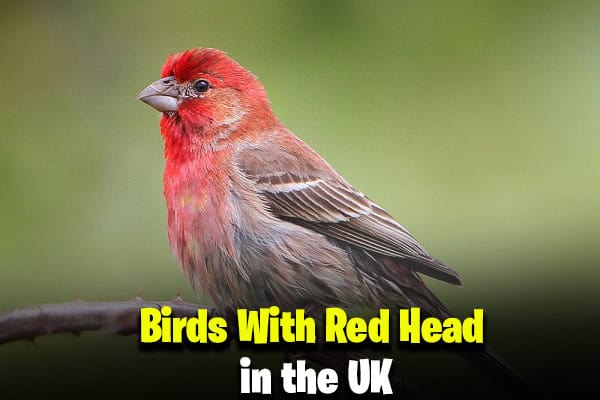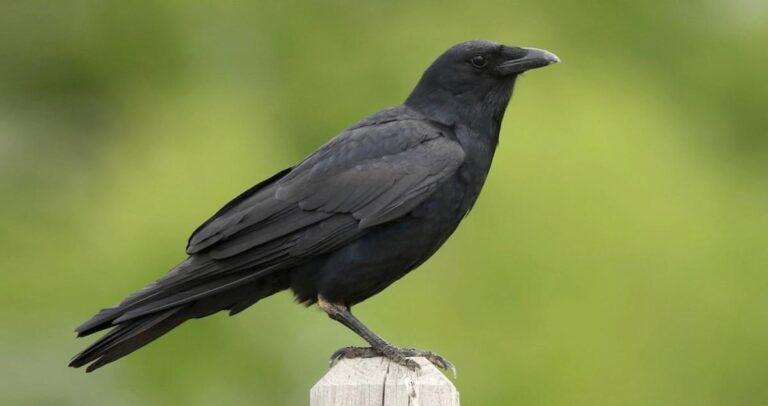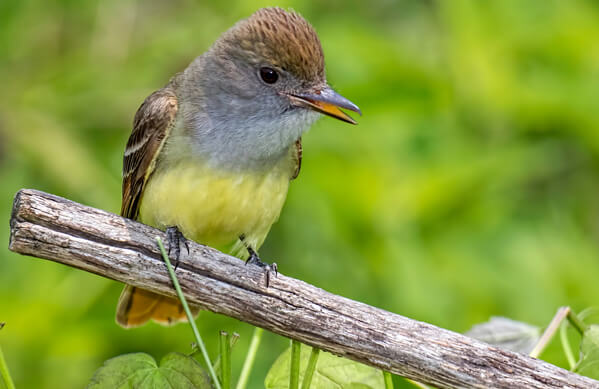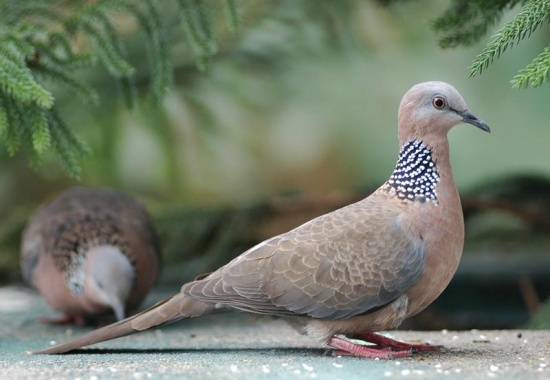9 Birds With Red Head in the UK (ID Guide With Photos)
Ever wondered how many birds with red head in the UK you can find on your birdwatching trips? This guide shows nine amazing species, from the eye-catching Black Grouse to the lively Goldfinch. Each has a special red head feature. Whether you’re an expert or new to birdwatching, learning about these red-headed birds can make your time outdoors more exciting.
Let’s explore the world of these birds together and learn how to spot them better. Get ready to grow your bird identification guide knowledge!
Introduction to Birds With Red Head in the UK
The UK is home to many bird species, some with striking red feathers. Seeing these red-headed birds in nature is a special experience for bird lovers. The Red-headed bird’s introduction talks about their looks, behaviors, and where they live.
Red-headed birds might not be the most common in the UK, but they are very interesting. Their bright red color helps them find a mate and defend their territory. For those who enjoy birdwatching UK, learning about these birds makes their hobby more exciting. It helps you spot these beautiful birds when you’re out.
Getting to know these unique birds helps us appreciate the UK’s bird life more. Learning about their habits and the problems they face is important for protecting wildlife. This knowledge lets you help during your birdwatching trips.
What to Look for When Identifying Birds
Identifying red-headed birds takes careful attention to their unique features. Start with bird identification tips focusing on size, color patterns, and distinct markings. The bill shape and plumage color are key to spotting them easily.
Watch their flight patterns and behaviors. Some birds fly erratically, others glide smoothly. Call notes are crucial too—different species make distinct sounds. Knowing where they live helps too. For instance, some prefer woodlands, while others like urban areas.
Learning about seasonal changes is vital for birdwatching basics. Migratory birds come at different times, offering great spotting chances. Understanding their habits increases your chances of identifying them.
| Bird Species | Size | Color Patterns | Typical Habitat | Common Call |
|---|---|---|---|---|
| Goldfinch | Small | Bright yellow with red head | Open fields | Cheerful chirps |
| Great Spotted Woodpecker | Medium | Black and white with red cap | Forests | Distinctive tapping |
| Lesser Redpoll | Small | Brown with red crown | Woodland edges | High-pitched twittering |
Using these tips will improve your skills in identifying birds with red head in the UK. It will also make birdwatching more enjoyable.
Black Grouse
The Black Grouse, known as Tetrao tetrix, is a bird with unique traits and behaviors. Learning about its characteristics, lifespan, and conservation status can increase your appreciation for this bird.
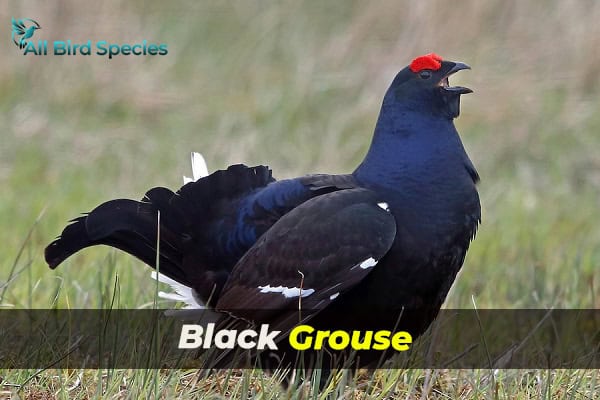
Scientific Name and Lifespan
The Black Grouse, Tetrao tetrix, lives between 5 to 12 years. It lives mainly in moorlands and wooded areas. This shows how well it adapts to different places.
Physical Characteristics
Male Black Grouse are known for their shiny black feathers and bright red wattles above their eyes. Their tails look like a lyre and are key in mating displays. These displays are quite dramatic.
Female Black Grouse have feathers that are mottled brown and grey. These colors help them blend in with their surroundings.
Conservation Status
This bird is listed as a Red List species, with about 4,800 breeding pairs in the UK. Habitat loss is a big reason for their decline. This raises worries about their future.
Swallow
The Swallow, known as Hirundo rustica, is a bird that catches the eye. Its bright colors and amazing flight patterns make it popular with bird lovers. To spot a Swallow, you need to know about its behavior and where it nests.
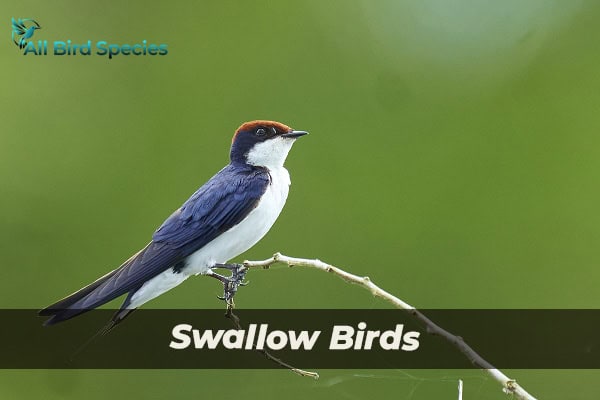
These birds are known for their flying skills, performing acrobatics to catch insects. They build their nests in places like barns or under eaves, showing a connection to human spaces.
Behavior and Nesting Habits
Understanding their behavior helps in identifying Swallows. Both males and females work together to feed their young, a sign of cooperation in bird families. Their nests are made of mud and straw, designed to last.
Swallows are social birds, often found in groups during breeding season.
Seasonal Migration
Swallows are part of the migratory birds UK, returning from Africa each spring. They come back when it’s warm and food is plentiful. Their migration is impressive, with around 860,000 breeding territories in the UK.
Despite the challenges, these birds have adapted to human environments, ensuring their numbers will continue to thrive.
Pheasant
The Common Pheasant, known as Phasianus colchicus, has interesting differences between males and females. These differences help us tell them apart and understand their lives. They live in various places and behave in unique ways.
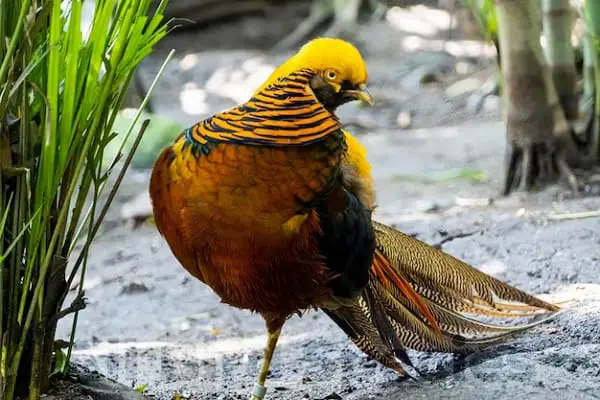
Distinct Features of Male and Female
The male Common Pheasant stands out with its bright colors. It has a dark green head and red facial wattles. These features help it find a mate during mating season.
On the other hand, female pheasants blend in with their surroundings. They have a mottled brown color that hides them in the grass and bushes. This shows how each sex has adapted to its role in survival and finding a mate.
Impact of Hunting on Population
Hunting has greatly affected the Common Pheasant population. These birds can live up to 12 years in the wild. However, hunting has reduced the number of males. Now, there are about 2.3 million breeding females, many of whom are there for hunting programs.
This has changed the bird’s population. If you enjoy birdwatching or hunting, knowing about these changes can deepen your respect for the Common Pheasant and its home.
Goldfinch
The Goldfinch, known scientifically as Carduelis carduelis, is a bright bird found in the UK. It thrives in various habitats thanks to its population trends and diet.

Population Trends
About 1.2 million pairs of Goldfinches live in the UK, showing a stable population. Their ability to adapt, especially in how they eat, helps them succeed. This makes them a key part of the bird populations UK, showing a healthy environment.
Feeding Habits and Diet
The Goldfinch eats mainly seeds, fitting its unique beak perfectly. You can often see them at backyard bird feeders, loved by bird fans. Their bright red faces and yellow wing patches make them stand out and easy to spot.
European Green Woodpecker
The European Green Woodpecker, known as Picus viridis, is a sight to behold with its bright green feathers and red crown. It’s a favorite among birdwatchers. The male’s bright green on top and pale yellowish-green below are easy to spot.
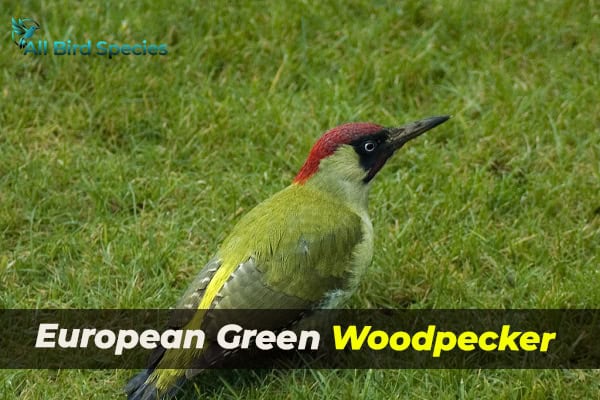
This woodpecker is unique in how it finds food. Unlike others, it searches for ants and larvae on the ground, not in trees. This special way of hunting makes it stand out.
There are about 52,000 breeding pairs of European Green Woodpeckers. But, they’re facing threats from losing their homes. It’s important to know about these issues to help protect them.
| Characteristic | Description |
|---|---|
| Scientific Name | Picus viridis |
| Coloration | Bright green plumage, pale yellowish-green underparts, red crown |
| Feeding Behavior | Primarily hunts for ants on the ground |
| Population Size | Around 52,000 breeding pairs |
| Threats | Habitat loss |
Great Spotted Woodpecker
The Great Spotted Woodpecker, known as Dendrocopos major, is a bird with a unique look. It has black and white feathers and a bright red spot on its head. This makes it a favorite among birdwatchers and nature lovers. It is about 23 cm long, which is typical for woodpeckers in the UK.
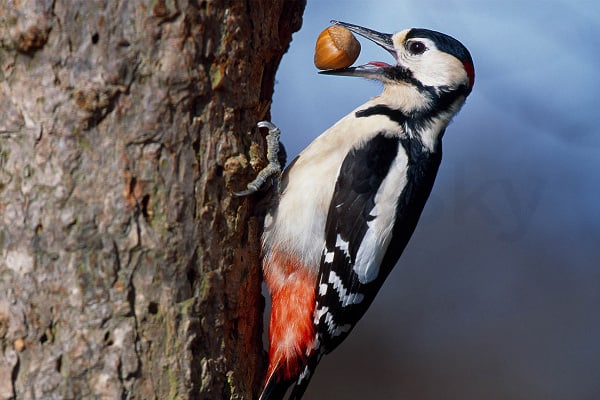
Comparison with Smaller Woodpecker Species
When you look at the Great Spotted Woodpecker and the Lesser Spotted Woodpecker, you see big differences. The Great Spotted is bigger and more common in many places. This makes it easier to see. Here’s a quick comparison:
| Species | Size (cm) | Coloration | Population Status |
|---|---|---|---|
| Great Spotted Woodpecker | 23 | Black and white with a red crown | 140,000 breeding pairs |
| Lesser Spotted Woodpecker | 16 | Black and white; less pronounced colors | Scarcer, with declining numbers |
The Great Spotted Woodpecker is a standout in the UK, with a large population and ability to live in many places. It’s found in cities, woods, and even backyards. This shows how diverse the UK’s bird life is.
Lesser Spotted Woodpecker
The Lesser Spotted Woodpecker (Dryobates minor) is a bird you might see in the UK. It’s small, about 15 cm, and is quite shy. It lives in certain woodpecker habitats that are key to its survival and breeding.
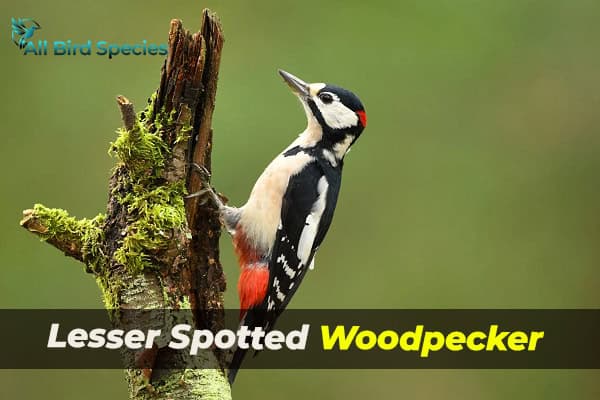
Habitat and Distribution
This woodpecker loves mature woodlands, where it hunts for insects and larvae. Sadly, its numbers in the UK have dropped a lot, with only 800 to 1,000 breeding pairs left. This is a big drop of 83% since 1970, showing how important it is to protect its home. The changes in UK bird distribution are mainly due to losing its habitat. So, saving the places where this woodpecker lives is crucial for its survival.
| Factor | Details |
|---|---|
| Scientific Name | Dryobates minor |
| Size | Approximately 15 cm |
| Breeding Pairs in the UK | 800 – 1,000 |
| Population Decline Since 1970 | 83% |
| Primary Habitat | Mature woodlands |
Lesser Redpoll
The Lesser Redpoll, known scientifically as Acanthis cabaret, is a bird that catches the eye in the UK. It’s small, about 11-12 cm, and has a unique look. Males show off red patches on their heads, making them stand out with their brown streaked feathers.

Physical Description and Size
It’s easy to spot a Lesser Redpoll in the wild because of its distinct look. Males have a red crown and black chin. Both males and females have brown streaks on their feathers. Their small, pointed bills are ideal for eating seeds. Birdwatchers and nature lovers find joy in watching these birds in their natural setting.
Conservation Challenges
The Lesser Redpoll is a beautiful bird facing big challenges. With only about 30,000 breeding pairs, many threats threaten their survival. Habitat loss and changes in farming hurt their numbers. We need conservation efforts to help these birds. This way, the Lesser Redpoll can keep being a part of our bird world.
Common Redpoll
The Common Redpoll, known scientifically as Acanthis flammea, is a winter visitor in the UK. They often come in large groups to the east coast. These birds stand out with their bright red caps and lively nature. They are bigger than the Lesser Redpoll but keep their quick, social ways.

In winter, you might see Common Redpolls looking for seeds in open spots or fields with weeds. Their Redpoll bird characteristics include a mix of brown and white streaks. This helps them blend in well. Seeing a Common Redpoll is rare, as there are only 1-4 pairs in the UK. This makes them a treasure for birdwatchers!
Birdwatching Tips for Spotting Red-Headed Birds
Spotting Birds with red-head in the UK takes a bit of planning. Using the right birdwatching techniques makes it more fun. Start by finding out where these birds live. For example, Black Grouse like moorlands, while woodpeckers enjoy woodlands.
When looking for red-headed birds, pay attention to the time. Early mornings and late afternoons are best. This is when they are most active. Don’t forget to bring binoculars to get a closer look without scaring them away.
Being patient is key. Some red-headed birds can be hard to spot because they are shy. Learning their songs and calls helps you identify them better. This makes birdwatching more rewarding and fun.
Final Thoughts
Red-head birds in the UK are truly captivating. Species like the Goldfinch and Black Grouse show the amazing variety in our bird life. But, their different conservation statuses show we need more awareness and action from birdwatchers.
This birdwatching UK conclusion stresses the need for careful watching and helping in conservation. It’s vital to know what these birds need and the challenges they face. Every effort, like protecting their homes or teaching others, helps keep our natural world safe.
Watching birds not only makes your experience richer but also deepens your commitment to protecting them. As you watch the beauty of our birds, remember, that your actions count. Supporting conservation and local projects improves your birdwatching and helps protect these birds for the future.

